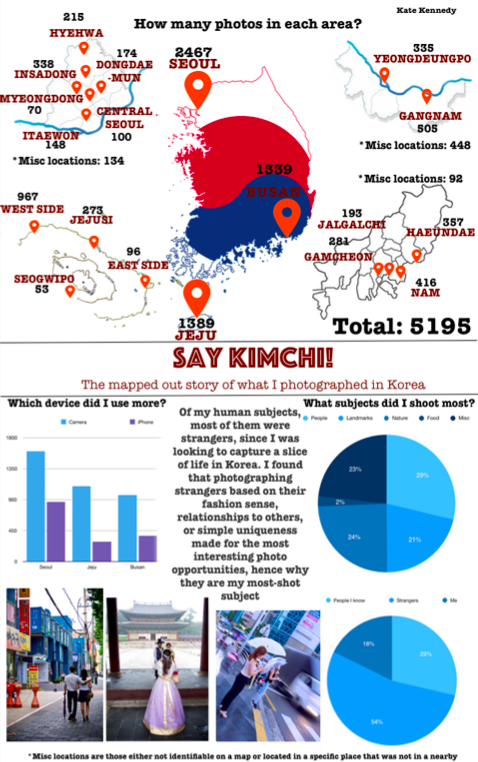Interdisciplinary Research and Inquiry
Prompt: IAS students develop their ability to assess and conduct interdisciplinary research by engaging with and across multiple areas of knowledge and kinds of inquiry. They learn to think critically and creatively as they develop research questions, pursue them with appropriate sources and methods, and present results in a form suited to their purpose and intended audience. In this process, they learn to position their own work in relation to other research literatures and methods of inquiry, and in relation to relevant debates and diverse social contexts.
What this means to me: Through my time in IAS, where there was creativity, there was also involved and intense research on such topics of popular culture. Part of this research delves into looking at things through multiple lenses and synthesizing said research in different ways, ergo “interdisciplinary.” The following two assignments showcase my research on the pop culture of Japan and Korea, but in very different ways. One is a paper that delves into the strong symbolism in anime, whereas the other is an infographic that synthesizes the photos I took in Korea and what they show about the culture there. Both required an interdisciplinary lens to analyze and describe in the end:
BIS 341 A- Topics in the Study of Culture: Japanese Popular Culture
Fall 2017
My Gaijin and Me: How Foreigners in Japanese Anime like “Little Witch Academia” are used to Perpetuate Japanese Nationalism (Final Research Paper)
This class focused on studying pop culture in Japan, and how it reflects the sentiments of the country at certain points in time, our final assignment being to research a topic about Japanese pop culture, analyze, and expand on it. I myself was not well-versed in Japanese pop culture, so it was outside my general realm of knowledge, requiring me to explore it more. I came across an anime called Little Witch Academia, about a group of students at a school for witches that must welcome a Japanese non-witch into their lives. I noticed how the show clearly reinforced existing stereotypes the West and the Japanese may have about foreigners, while showing the Japanese protagonist as a hero despite her shortcomings, which seemed to say a lot about how Japanese nationalism seeps its way into the culture. To research, I watched the show, read authoritative material online, and studied academic journals on gaijin (foreign) culture to inquire full multiple disciplines.
INFO 497- Information, Culture, and Technology in Modern South Korea
Fall 2017
Digital Storytelling
One of the culminating projects from my study abroad in Korea was heavily based on interdisciplinary research in the most creative of ways. As we went about our days in Korea, one thing we were reminded to do is always take data, whether than be through photos, observations, conversations, or experiences. We then had to synthesize this information into a coherent infographic, showcasing a focus on our trip. While some students focused on certain interests, such as their shopping habits, dining, or popular culture they enjoyed, I as a media student took every purposeful photo I took throughout the trip and then categorized them by location, device used, subject, and of the subjects that were people, my relationship to them. I found from this research that the majority of my photos were taken in Seoul (which makes sense since I was there for 3/4 of the trip), using primarily my DSLR, with a wide variety of subjects (people being the most prominent only slightly), and of the people photographed, over half were complete strangers.
